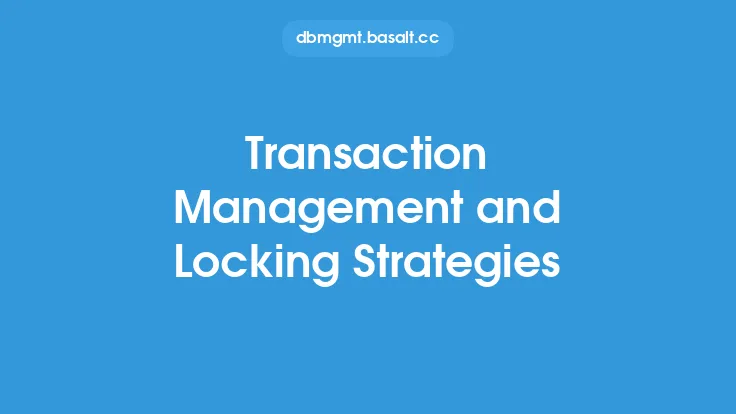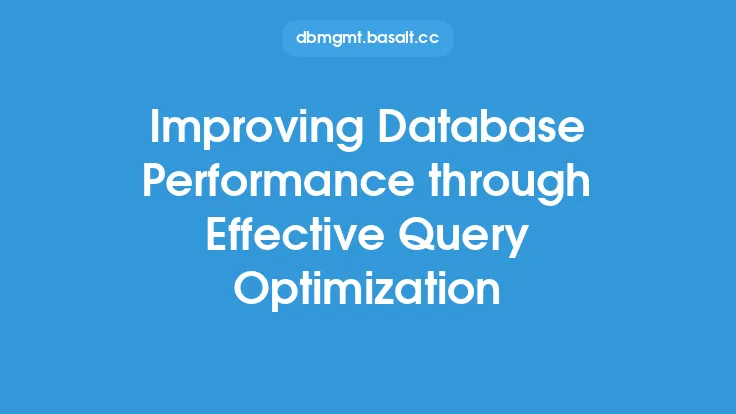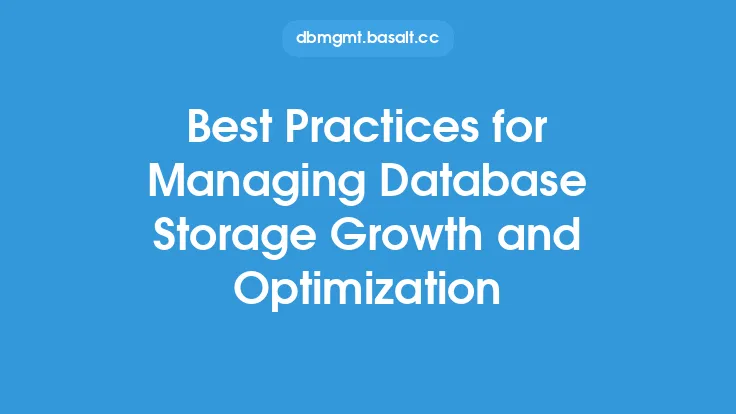Locking hints are a crucial aspect of query optimization in database systems, allowing developers to influence the locking behavior of the database engine and improve the performance of their applications. By providing additional information to the query optimizer, locking hints can help reduce contention, minimize deadlocks, and optimize resource utilization. In this article, we will delve into the world of locking hints, exploring their syntax, usage, and best practices for effective query optimization.
Introduction to Locking Hints
Locking hints are directives that can be embedded in SQL queries to specify the locking behavior of the database engine. These hints can be used to override the default locking behavior of the database, allowing developers to fine-tune the locking strategy for specific queries or transactions. Locking hints can be applied at various levels, including table, row, or index, and can be used to specify the type of lock, the duration of the lock, and the lock escalation policy.
Types of Locking Hints
There are several types of locking hints that can be used in database queries, each with its own specific purpose and behavior. Some of the most common locking hints include:
- ROWLOCK: This hint specifies that row-level locks should be used instead of page or table locks. Row-level locks can reduce contention and improve concurrency, but may increase the overhead of lock management.
- PAGLOCK: This hint specifies that page-level locks should be used instead of row or table locks. Page-level locks can reduce the overhead of lock management, but may increase contention and reduce concurrency.
- TABLOCK: This hint specifies that a table-level lock should be acquired, allowing exclusive access to the table. Table-level locks can be used to prevent concurrent modifications, but may block other queries and reduce concurrency.
- UPDLOCK: This hint specifies that an update lock should be acquired, allowing the query to update the data while preventing other queries from acquiring a shared lock. Update locks can be used to prevent concurrent updates, but may block other queries and reduce concurrency.
- XLOCK: This hint specifies that an exclusive lock should be acquired, allowing the query to update the data while preventing other queries from acquiring any type of lock. Exclusive locks can be used to prevent concurrent access, but may block other queries and reduce concurrency.
Using Locking Hints in Queries
Locking hints can be used in various types of queries, including SELECT, INSERT, UPDATE, and DELETE statements. The syntax for using locking hints varies depending on the database management system being used. For example, in Microsoft SQL Server, locking hints can be specified using the WITH keyword, followed by the locking hint and the table name. For example:
SELECT * FROM customers WITH (ROWLOCK) WHERE customer_id = 1;
In Oracle Database, locking hints can be specified using the /*+ keyword, followed by the locking hint and the table name. For example:
SELECT /*+ ROWLOCK */ * FROM customers WHERE customer_id = 1;
Best Practices for Using Locking Hints
While locking hints can be a powerful tool for query optimization, they should be used judiciously and with caution. Here are some best practices for using locking hints:
- Use locking hints sparingly: Locking hints should only be used when necessary, as they can override the default locking behavior of the database engine and potentially lead to performance issues.
- Test and validate: Locking hints should be thoroughly tested and validated to ensure they are having the desired effect on query performance.
- Monitor and adjust: Locking hints should be monitored and adjusted as needed to ensure they are not causing contention or reducing concurrency.
- Consider alternative solutions: Before using locking hints, consider alternative solutions, such as optimizing queries, indexing, or partitioning, which may be more effective and efficient.
Common Pitfalls and Challenges
While locking hints can be a useful tool for query optimization, there are several common pitfalls and challenges to be aware of:
- Overuse of locking hints: Overusing locking hints can lead to contention, reduce concurrency, and negatively impact performance.
- Inconsistent locking behavior: Inconsistent locking behavior can lead to deadlocks, timeouts, and other performance issues.
- Lock escalation: Lock escalation can occur when a query acquires a large number of locks, leading to performance issues and contention.
- Index fragmentation: Index fragmentation can occur when locking hints are used to acquire row-level locks, leading to performance issues and contention.
Conclusion
Locking hints are a powerful tool for query optimization in database systems, allowing developers to influence the locking behavior of the database engine and improve the performance of their applications. By understanding the syntax, usage, and best practices for locking hints, developers can effectively use these directives to reduce contention, minimize deadlocks, and optimize resource utilization. However, locking hints should be used judiciously and with caution, as they can override the default locking behavior of the database engine and potentially lead to performance issues. By following best practices and avoiding common pitfalls and challenges, developers can harness the power of locking hints to optimize their database queries and improve the performance of their applications.





